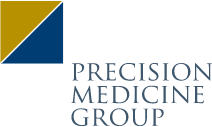The five-step, rare disease-ready checklist

First published on PMLive.
By: Kevin Flynn, SVP, Director of Medical Services and Jaime Cohen, Director, Brand Strategy
Rare disease is where innovation happens, and it’s often driven by emerging biotechs launching their first brand.
The commercial teams supporting them are staffed by big pharma expatriates who now have to dream big with small teams and smaller budgets.
Or they are staffed by individuals born and bred in biotech who know what to do, but have little time to do it. They know how to build planes while flying them, and need partners that know the same. In many cases, the brands they are launching are first-in-class, bringing novel technology to market.
How can a commercial team find success in rare disease? Follow these steps.
Get personal
First, know the patient advocacy community. Schedule meetings with key liaisons of these organizations, know their challenges and struggles, and establish trust. This takes at least a year, so start early.
Caregivers of patients with rare diseases are fiercely protective, as are the patient advocacy groups that serve them. Without trust, you have nothing.
Second, establish the infrastructure to communicate compliantly with patients and their caregivers. Patient liaison services are key but occasionally overlooked until right before brand approval and patient service program start up.
A longer ramp-up time allows for immersion in the community’s needs, as well as the opportunity for them to help to shape your organization’s approach to patient values. These liaisons are the face of your company. What they do is critical to your brand and business.
Monitor the competition
Create a clinical trial tracker that mines all relevant competitor data from clinicaltrials.gov and investor materials. Update this tracker regularly, noting changes in trial status or protocol amendments. Start early.
You will see the trajectory of your competition’s plans as they unfold, and you’ll develop a deep understanding of where they are going and their potential differentiation plan. This task is time-consuming, but manageable if attended to weekly. Delegate to your agency of record. This is what they do, and they love doing it.
Be an onboarding ninja
If you’re in an emerging biotech with a small but growing team, you’ll learn that consensus and planning can change dramatically with new hires. Establish an onboarding protocol for new hires and create messaging documents that clearly outline the science, claims and references that form the basis for your brand as it stands.
This will avoid backtracking and major changes in direction as new members join the team. Best laid plans can evaporate if a new chief medical officer (CMO) comes on board and doesn’t accept key tenets of your scientific platform.
Ensure your medical communications agency creates a scientific platform that is based on primary data and defensible science. Identify all ‘aspirational’ messages and the trials you hope will support them.
Establish a regulatory review process – early
When setting up staffing for a maiden voyage in rare disease, it’s common for folks to wear multiple hats. But when one of those extra hats is tossed in to fill a spot on the medical, legal and regulatory review team, things can grind to a halt. From an expertise standpoint, it makes sense for CMOs to participate in the review process.
But from a capacity and priority standpoint, their days are filled with data, FDA meetings and filings. In other cases, review team hiring is pushed further down on the priority list and marketing activities get held up because there’s no one accountable to setting guardrails. It’s not imperative to bring them in all at the same time, but have a clear plan that aligns with initial marketing objectives.
Plan a multichannel strategy proactively
Multichannel communications in Big Pharma are easy. There are teams devoted to all channels and all are supported by ample budgets. The compliance boundaries are well established.
In an emerging biotech, the teams are smaller and often not fully built until well after launch. Lean on your agency of record and other partner agencies to build this strategy.
They should be able to conduct a multichannel communication workshop, determine appropriate channels, and clearly define which messages or tactics can or cannot be delivered through each channel. Include your medical, legal and regulatory colleagues from the beginning. With the right planning you can have an effective multichannel program and be compliant.
You are on your way to marketing your rare disease treatment and you are building your plane at the same time as flying it. These steps provide the nuts and bolts you’ll need for rapid stabilization.
It’s always an exciting journey. So, plan ahead, work hard and take some time to enjoy the ride.










